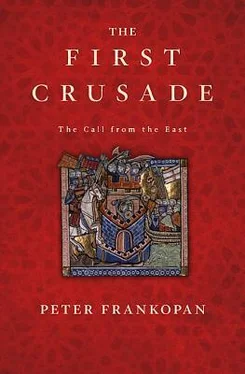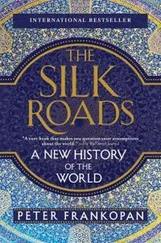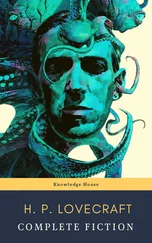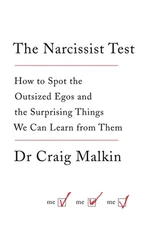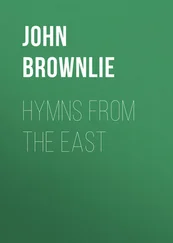With Alexios’ rule, Byzantium entered a period of sombre asceticism. Soon after taking power in 1081, the emperor resolved to wear a hair shirt and to sleep on a stone floor to atone for the behaviour of his troops during the coup. He apologised to the clergy the following year for taking unused church treasures to help fund efforts against the Normans, vowing never to do so again. Within the imperial palace, the ‘utter depravity’ of previous generations was replaced by solemn singing of sacred hymns and strictly regimented mealtimes. 55
In addition, Alexios was at pains to impose his orthodox religious views. From the start of his reign, stern action was taken against those with opinions and beliefs that were deemed heretic, with the sovereign himself regularly presiding over trials and administering punishment to those found guilty. Championing the interests of the church was of course an entirely sensible policy, especially for a usurper who had seized the throne by force. But in Alexios’ case, it was sincere.
Yet the emperor had no trouble taking on senior members of the clergy: in his first three years on the throne, he engineered the replacement of not one but two patriarchs of Constantinople, until the appointment of Nicholas III Grammatikos provided him with a man willing to co-operate with him. Other leading clerics were also dealt with forcefully, such as the bishop of Chalcedon, who was tried and exiled after criticising the emperor and his policies. Furthermore, as we have seen, Alexios was the driving force behind the rapprochement with Rome at the end of the 1080s, overseeing a meeting of the synod in the capital, and all but insisting on reconciliation with the papacy.
The force of Alexios’ character fashioned the empire. Under his leadership, there was a return to the military values that had characterised the tenth century, a time when emperors were generals, and the army was the cornerstone of Byzantium. Alexios himself was most comfortable in the outfit of a soldier, rather than the lavish vestments of the emperor, and he preferred a small group of intimates over the elaborate ceremonials that characterised the court in Constantinople. 56
Alexios abandoned the complicated hierarchy that dictated who sat where while dining in the palace, establishing an altogether more modest and basic regime. The emperor frequently invited the least fortunate in society to share his table, dining with epileptics and reportedly being so eager to help them that he himself forgot to eat. 57Even a contemporary who was otherwise almost uniformly hostile to Alexios commented that his attitude to the poor was both unusual and commendable. In addition, he ‘never drank, and could not be accused of being a glutton’. 58Rather than delegating affairs to bureaucrats, he made himself available to discuss matters of concern with his subjects, and even with foreigners; he would meet with anyone who wanted to see him personally, often staying up late into the night to do so. 59
While the close control Alexios maintained over Byzantium was impressive, it was also suffocating. There was violent opposition to his style of leadership on the eve of the Crusade and, as we will see, this played a central role in the emperor’s appeals to the papacy. The heavy emphasis on military affairs was oppressive and drained the empire’s resources; art, architecture and literature stagnated during Alexios’ reign. What little was produced in terms of visual culture was austere and sombre: a mural painted at the Great Palace of Blakhernai depicted the emperor at the time of the Last Judgement acting as a representative of Christ. 60This was an immensely revealing representation of how Alexios saw himself: God’s faithful servant at a time of darkness.
Apart from his coinage, we have only two images of the emperor, but one can get a sense of the impression Alexios made from Anna’s idealised description of him in the Alexiad . He struck an imposing figure, even if he spoke with a lisp: ‘when one saw the grim flash of his eyes as he sat down on the imperial throne, he reminded one of a fiery whirlwind, so overwhelming was the radiance that emanated from his bearing and his very presence. His dark eyebrows were curved, and beneath them the gaze of his eyes was both terrible and kind. A quick glance ... [would] inspire in the beholder both dread and confidence. His broad shoulders, muscular arms and deep chest, all on a heroic scale, invariably commanded the wonder and delight of the people. He radiated beauty and grace and dignity and an unapproachable majesty.’ 61
This was the man who prompted the First Crusade, a seminal moment in the history and development of the medieval world. Yet with the repulse of the Normans and the comprehensive defeat of the Pechenegs, the fortunes of the Byzantine Empire appeared to be well on the mend. Why, then, by 1095, did Byzantium require outside help to take on the Turks?
The Byzantine Empire was under great pressure when Alexios took the throne – threatened by the incursions of aggressive neighbours, weakened by a collapsing economy, and riven with political infighting. Looking back through the distorting prism of the First Crusade, it would seem natural to assume that the greatest of these dangers came from hostile Turkish expansion in the east. This was certainly the impression created by Anna Komnene; her testimony even suggested that Asia Minor had been essentially lost to the Turks before Alexios came to power. In fact, Asia Minor was relatively stable in the 1080s; indeed, the relationship between Byzantium and the Turks in the first part of Alexios’ reign was generally robust and pragmatically positive. It was only in the early 1090s, in the years immediately before the beginning of the First Crusade, that there was a dramatic deterioration of Byzantium’s position in the east. Conflict with the Muslim world, in other words, was by no means inevitable; it appears that the breakdown in relations between Christians and Muslims at the end of the eleventh century was the result of a spiralling political and military process, not the unavoidable conflict between two opposing cultures. It was, though, in the interests of Anna Komnene to create the opposite impression; and it is an impression that has lasted down through the centuries.
At the start of his reign the new emperor’s attentions were focused squarely on the Normans and the Pechenegs. The Byzantine position in Asia Minor, on the other hand, was fairly resilient: there were many locations which had mounted stern resistance against the Turks in the decade following the battle of Manzikert, and they continued to hold out effectively after Alexios took the throne. In many cases, the defiance was the result of effective local leadership, rather than of the actions of Constantinople. The area around Trebizond on the north coast of Asia Minor, for example, was secured by Theodore Gabras, a scion of one of the town’s most prominent families. Such was the ferocity of Gabras’ defence of the surrounding region that his exploits and bravery were remembered with admiration by the Turks more than a hundred years later in a lyrical poem about their conquest of Asia Minor. 1A substantial area around Amaseia, meanwhile, had been held extremely effectively in the 1070s by Roussel Balliol, a Norman initially in imperial service before declaring himself independent of Byzantium, frustrated by the lack of support he was being given by the government and inspired by the strong support of the local population which lionised him for the protection he provided. 2
Commanders were holding out far into the eastern extremities of Anatolia, even into the Caucasus. Three sons of Mandales, ‘Roman magnates’ according to a Caucasian chronicler, were occupying strongpoints in the region of Kaisereia in 1080–1, presumably on behalf of the empire, rather than opportunistically for themselves. 3Basil Apokapes held the important town of Edessa before Alexios’ usurpation and after, to judge from lead seals issued in his name. 4The appointment of a new governor of Mesopotamia by Alexios’ predecessor in 1078 likewise provides an indication that there were significant Byzantine interests worth protecting hundreds of miles east of Constantinople. 5
Читать дальше
